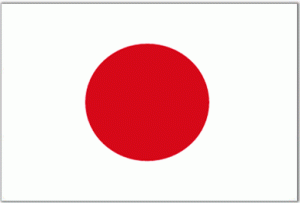Odd numbers: Japanese
 The next in the series of posts exploring how numbers are rendered in different languages is Japanese.
The next in the series of posts exploring how numbers are rendered in different languages is Japanese.
Japanese, along with many other Asian languages like Mandarin Chinese, Cantonese and Korean, has a reputation for being fiendishly difficult to learn for native English speakers. While this is true in many ways, the number system is in fact pretty straightforward.
When I learned Japanese, counting from 1 to 10 was one of the first things we learned to do. It was only after we had mastered the first 10 numbers that our teacher told us that by learning just a couple more words, we could effectively now count to 99,999,999 in Japanese.
Unlike English’s irregular teens (eleven, twelve, thirteen instead of oneteen, twoteen, threeteen etc. or another more regular pattern) and having a different word for each multiple of ten (twenty, thirty, forty instead of twoty, threety, fourty etc.), Japanese numbers are entirely regular – much like in Chinese. As mentioned in a previous post, this could possibly be a contributing factor towards the stereotype of Asians being “good at math”. In Japanese, “thirty five” is literally “three ten five” (san-ju-go).
For larger numbers, English tends to favour grouping digits into threes before we introduce a new term. After a thousand, we have ten thousand and a hundred thousand before introducing the million. Then, once again, we have ten million and a hundred million before we have the billion. Not so in Japanese – a hundred is hyaku, a thousand is sen, and ten thousand is man – with the Yen being a currency that often stretches into the hundred thousands, man ends up being a pretty important number. From there, a hundred thousand is ju-man, literally “ten ten thousands”. A million is hyaku-man – “a hundred ten thousands”. Ten million is sen-man – “a thousand ten thousands”. While this takes a little getting used to, it still results in pretty much a perfectly regular counting system, besides a couple of slightly irregular pronunciations (e.g. 300 is san-byaku rather than san-hyaku, because it’s easier to say).
Unfortunately, however, it’s not as simple as all that. Like Chinese and Korean, Japanese incorporates into ‘measure words’ (josuushi) into its counting system. Whereas in English, I could simply say “there are thirty four of them”, in Japanese you need to add a suffix to the number that is specific to the object, person, event, or action you’re counting. Sadly, there are several hundred of these, and they simply have to be learnt. The josuushi used depends on the qualities of what you’re counting – long, thin objects such as pencils, roads, rivers or bottles use hon or pon; but thin, flat objects such as sheets of paper, photos or plates use mai. Thus, being able to say that “there are two dogs” will not necessarily allow you to say “there are two cars”. There are around 30 commonly-used josuushi, and plenty more that are used sporadically.
There is another way, however – there is a ‘separate’ counting system that allows you to express a quantity without using the specific measure word. Unfortunately, this scale only goes from 1 to 10.
